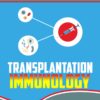Why do we study crayfish? Answers may range from their cultural or economic value to ecological importance to the high conservation need of many species. Freshwater crayfish are an important part of ecosystems in rivers and dams. Crayfishes have become one of the most widely introduced freshwater taxa, and the ecological effects of nonnative crayfishes are well familiar. Crayfish are hosts for multiple ectosymbionts, the most notable of which are clitellate annelid worms of the order Branchiobdellida. Historically, these worms were considered commensal or sometimes parasitic, but recent work has shown that crayfish can benefit from this relationship, at least under certain environmental conditions. Morphology and ecosystem function often reflect land-use practices and state of development or degree of industrialization of a region. Crayfish key roles and attributes in ecosystems include indicators or surrogates for water quality, bioindicators for communities or habitats, keystone controllers of trophic webs and ecological engineers. Protected crayfish may also act as umbrella species for the conservation of communities. Their main habitat templets are cool or warm high quality streams and lakes, warm lower quality wetlands, semiterrestrial swamps and temporary wetlands, and cave ecosystems.
This book ‘Freshwater Crayfish’ deals with the crayfish biology with attention given to crayfish status and conservation, genetic variation and physiological adaptation to the environment, concentrates on ecological roles of freshwater crayfish from a breadth of authors and researchers in different countries and continents working on a wide range of organisms and questions. The knowledge of the reproductive strategy of invasive species is foremost to the understanding of its invasion ecology as it determines the potential for population increase and range expansion. It also attempted to represent insights on field sampling for crayfish from a breadth of researchers in different nations and continents working on a wide range of organisms and questions.
This book is an essential reading for anyone involved in the biology or exploitation of these important animals.













